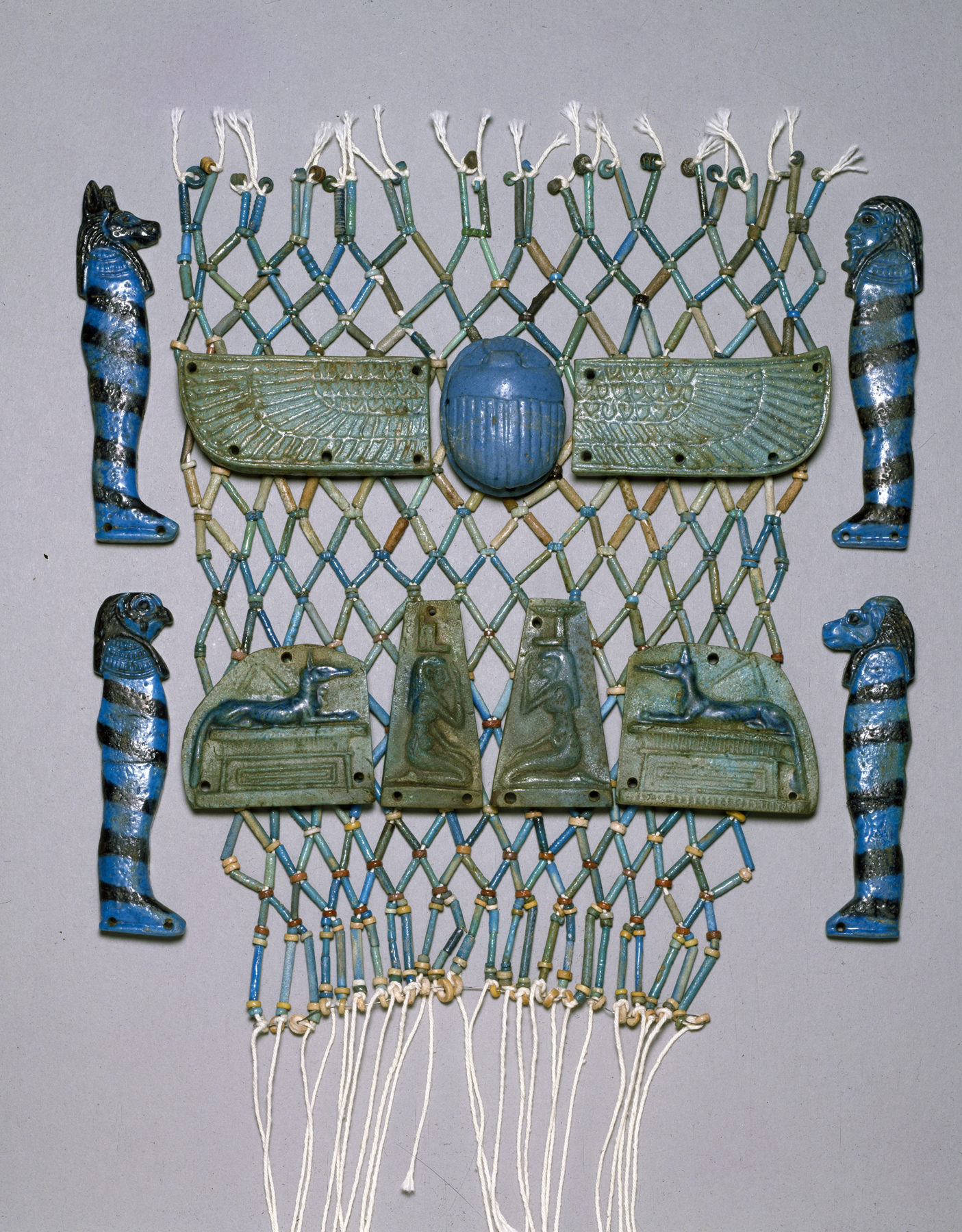Amuletic Figure of Kebehsenuef, Son of Horus
(Ancient Egypt and Nubia )
This faience amulet represents Kebehsenuef, the hawk-headed son of Horus. There are four sons of Horus and this amulet is part of a set of four (Walters 48.1638-1641). The sons of Horus protected the vital organs of the body after mummification. The image is that of a hawk-headed, mummiform human. The figure faces proper left. It is composed of blue glazed faience with the details picked out in purple/black manganese. The figure wears a three row broad collar and a tripartite wig. There are five diagonal stripes of manganese across the mummiform body representing the mummy wrappings or braces. A horizontal fracture separated the amulet about midway into two fragments which have since been reattached.
Numerous funerary amulets were usually placed among the many layers of linen strips used to wrap mummies. Specific amulets, along with their required position on the body, are listed in funerary texts such as "The Book of the Dead." Amulets were sometimes sewn directly onto the wrappings or could be incorporated into a bead net shroud covering the mummy. These amulets have been modeled with a flat underside and are pierced by tiny holes around the edges for attachment.
Provenance
Provenance (from the French provenir, 'to come from/forth') is the chronology of the ownership, custody, or location of a historical object. Learn more about provenance at the Walters.
Henry Walters, Baltimore [date and mode of acquisition unknown]; Walters Art Museum, 1931, by bequest.
Exhibitions
| 1984-1987 | Objects of Adornment: Five Thousand Years of Jewelry from the Walters Art Gallery, Baltimore. Cooper-Hewitt National Design Museum, New York; Chrysler Museum of Art, Norfolk; Carnegie Museum of Art, Pittsburgh; San Antonio Museum of Art, San Antonio; Philbrook Museum of Art, Tulsa; Honolulu Academy of Arts, Honolulu; New Orleans Museum of Art, New Orleans; Milwaukee Art Museum, Milwaukee; Minneapolis Institute of Art, Minneapolis; Toledo Museum of Art, Toledo; The John and Mable Ringling Museum of Art, Sarasota. |
| 1987 | eyJewelry from the Walters Art Gallery and the Zucker Family Collection. The Walters Art Gallery, Baltimore. |
| 1979-1980 | Jewelry - Ancient to Modern. The Walters Art Gallery, Baltimore. |
Conservation
| Date | Description | Narrative |
|---|---|---|
| 11/20/1978 | Examination | examined for condition |
| 8/20/1998 | Examination | survey |
Geographies
Egypt (Place of Origin)
Measurements
H: 3 9/16 x W: 15/16 x D: 5/16 in. (9 x 2.4 x 0.8 cm)
Credit Line
Acquired by Henry Walters
Location in Museum
Accession Number
In libraries, galleries, museums, and archives, an accession number is a unique identifier assigned to each object in the collection.
In libraries, galleries, museums, and archives, an accession number is a unique identifier assigned to each object in the collection.
48.1638











